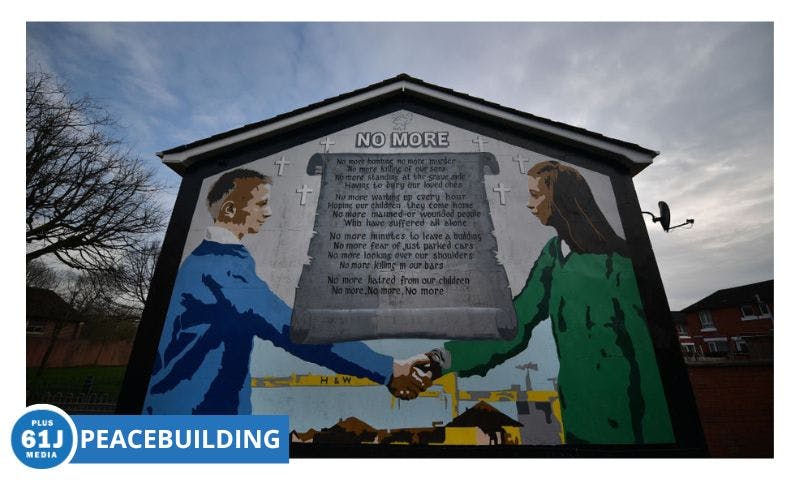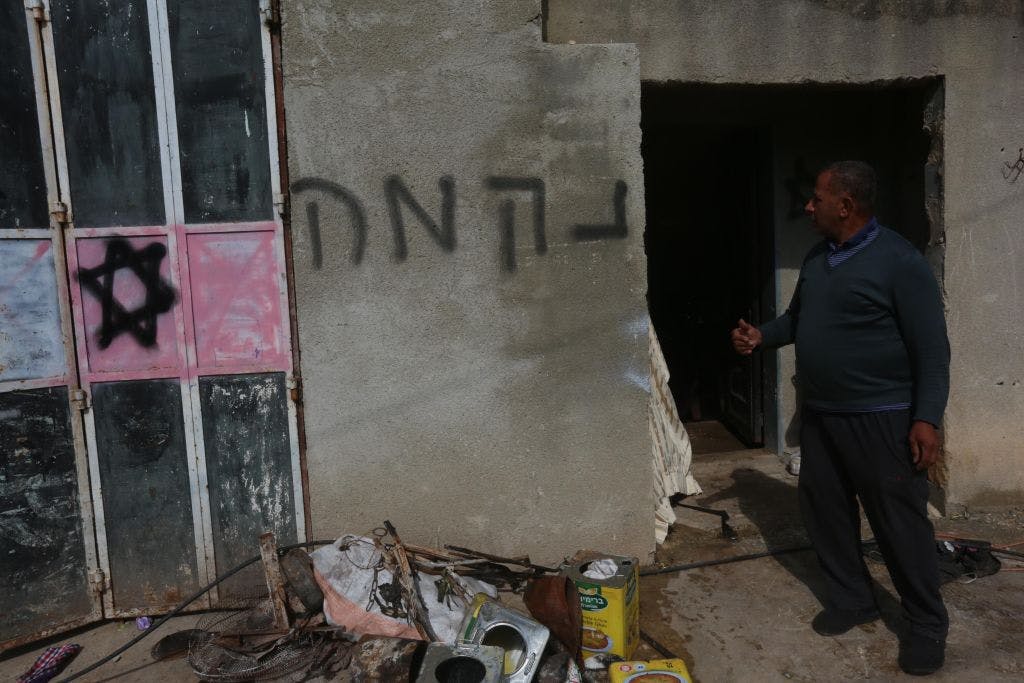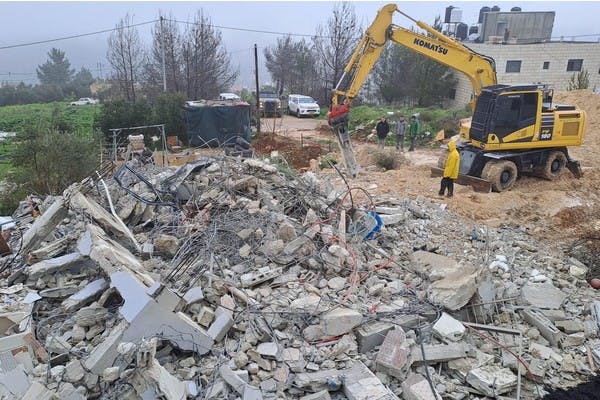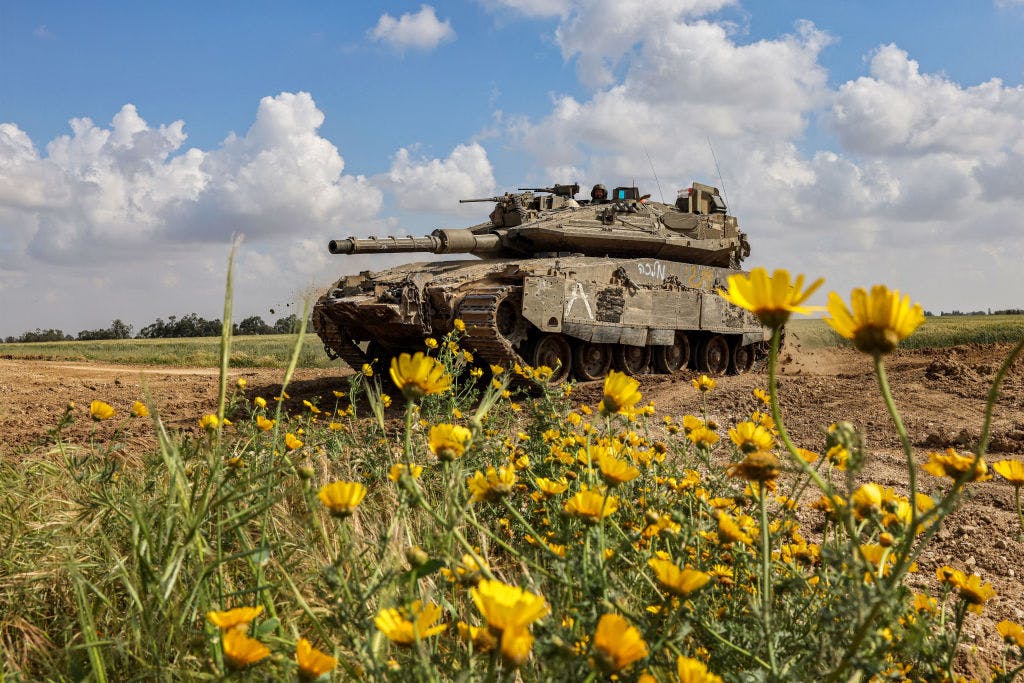Published: 11 April 2023
Last updated: 5 March 2024
On April 10, 1998, the British and Irish signed the Good Friday agreement ending decades of entrenched violence. ITTAY FLESCHER considers what it would take to reach a similar agreement between Israelis and Palestinians.
These days not many people ask what our lives might look like today had the Oslo Accords led to genuine peace between Israelis and Palestinians.
But it’s something I often ask myself as education director of Kids4Peace Jerusalem, an interfaith youth movement that brings Israeli and Palestinian kids together. A project of Seeds of Peace, we meet bi-weekly after school for fun, informal activities learning about one another’s cultures and narratives.
In 2019, I accompanied a group of 12 teenagers from the group to Belfast, Northern Ireland for an encounter program to explore why the peace agreement facilitated by Bill Clinton and George Mitchell took hold there much more effectively than the one facilitated in Oslo 30 years ago. Our goal was to see what we could learn from peoples plagued by sectarian hatred in their city – a legacy of violence dating to the Norman Invasion of 1169.
This week marks 25 years since the signing of the historic Good Friday Agreement which largely ended that violence. US President Joe Biden, King Charles III, and a parade of other world leaders, past and present, are travelling to Belfast to mark the milestone.
The peace deal between the British and Irish governments aimed to end “The Troubles”, a rather understated word for the horrific violence between 1968 and 1998. In 1972, the year that included Bloody Sunday and Bloody Friday, there was a terrorist incident every 40 minutes on average in Belfast. The city was surrounded by a ring of steel and high walls separated Catholics and Protestants.
The Good Friday agreement was approved by a vote of 71% of Northern Ireland residents, providing for a government carefully balanced between Protestant unionists and Catholic nationalists. It stipulated that Northern Ireland should be united with Ireland if majorities on both sides of the border favoured it, which has yet to happen. That clause meant British loyalists could claim a win at the time and Irish Republicans could claim a win for the future.
Most importantly, it put an end to a lethal guerilla war. The IRA and pro-British paramilitary groups agreed to give up their weapons, and Britain and Ireland freed about 400 people jailed for their involvement in violence.
On the occasion of the 25th anniversary of the Good Friday Agreement, the Irish Foreign Ministry shared a moving reflection by Gail McConnell, a poet and academic. “I was 17 in the spring of 1998. Had I had a vote, I would have ticked the ‘yes’ box, and I would have done so in the knowledge that I was voting for the early release from prison of one of my father’s murderers,” she said.
Such a statement seems unimaginable for most Israelis and Palestinians who have lost loved ones to the conflict.
When the Oslo agreement was signed, there was no referendum for either Israelis or Palestinians. The agreement was largely a secret, even to Israeli cabinet members and many in the PLO, until a few weeks before the signing on the White House lawn.
The lack of grassroots work required by civil society to build a constituency for peace before Oslo is a key reason for its failure. Former UK Prime Minister Tony Blair noted, "The Good Friday Agreement in Northern Ireland didn’t begin or come to fruition in a vacuum. There were many great things that happened before we even got to the negotiations that set the context, laid the groundwork, and created the environments for the negotiation to succeed."
One of those things was the International Fund for Ireland, which reached a transformative $1.5 billion in direct funding and $2.4 billion overall. This translated into $44 per person per year. Participation in peacebuilding programs became a right—and eventually a rite of passage—for young Catholics and Protestants.
By contrast, before the US passed the Middle East Partnership for Peace Act (MEPPA) in 2020, international funding for peace programs stood at only $1.50 per person in Israel-Palestine. It is still far below the kind of funding seen in Ireland.
The lack of meaningful contact, now exacerbated by the polarising nature of our social media, means we are a long way from grassroots acceptance of a peace process. If Israelis and Palestinians were invited to vote on a referendum for a peace agreement today, it is likely neither side would reach anywhere near 50%.
In January, a joint Palestinian-Israeli survey found that support for the two-state solution dropped to its lowest level since polling on the matter began in the early 2000s.
So what can be done, and what, if anything, can we learn from Northern Ireland?
One of the most powerful encounters we had on the Kids4Peace trip to Belfast was a meeting with Nichola Mallon and Mike Nesbitt, two politicians from opposing sides who rejected violence and embraced dialogue and negotiation.
Mallon, an Irish nationalist from the Social Democratic and Labour Party told us, “There was a time here when people told us that politics didn’t work, and you were considered weak if you thought that the political constitutional route was the way to go. But it’s come full circle. And what we have learnt is that the killing didn’t advance the change that we wanted.
“Things have changed much more through the democratic process than by us killing each other, because at the end of the day this is my home, and this is Mike’s home.”
A Palestinian student spoke about the frustrating failure of politics to achieve peace back home. Mallon said the key to their success in ending violence in Northern Ireland was the building of deep personal relationships and trust across the political aisle.
In Jerusalem today, it’s like everything that happened in Belfast has happened here in reverse. There is no faith here in politics. There is no trust let alone significant connection between Israelis and Palestinians. Schools in Israel’s “united capital” are almost completely segregated, meaning that there are very few opportunities for young people to meet and build understanding.
A PCPSR poll of 1,200 Palestinian adults released in March 2023 found widespread support for terror activity: 70 percent supported a recent shooting attack on settlers, two thirds supported armed groups such as Jenin Battalion and Lions’ Den, and almost all opposed PA security services arresting or disarming members of these groups.
Almost three quarters of Palestinians believe a two-state solution is no longer viable because of settlement expansion.
On the other hand, a 2019 report by the Palestinian-Israeli pollster team of Khalil Shikaki and Dahlia Scheindlin found that if Israel acknowledged responsibility for the creation of the Palestinian refugee problem, Palestinian support for a peace agreement would rise to 60 percent.
Similarly, if Palestinians acknowledged Jewish historic and religious links with Palestine, Israeli support for a peace agreement would rise to 60 percent.
What if our public narratives before Oslo had taught us to see our history in a manner which didn’t delegitimise the narrative of the other? What if we, on our memorial days, remembered not only the pain caused to us, but the pain we caused to one another? What if we promoted non-violence and compromise as signs of strength rather than weakness?
On my final day during that breezy summer in Northern Ireland, I walked past the Garrick Bar in Belfast. Pubs in Belfast are almost as ubiquitous as falafel shops in Jerusalem, appearing on most street corners, and being a place for meeting and conversation between friends.
The words on the wall of The Garrick summed up so much of what we can learn from how The Troubles ended: “A nation that keeps one eye on the past is wise. A nation that keeps two eyes on the past is blind.”
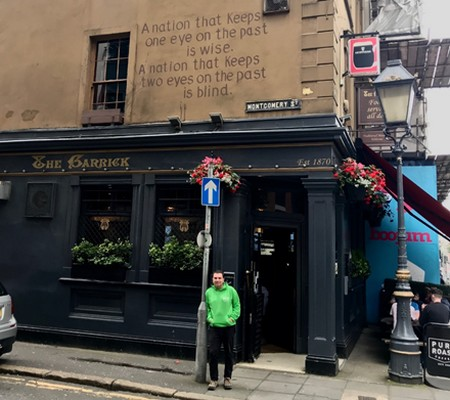
Those words felt like a revelation. I sometimes imagine what Jerusalem would be like if that sentiment was etched more deeply on its walls and hearts.
Imagine if those words could become a guiding light for both Israelis and Palestinians, so that we don’t go another 30 years missing the opportunity to build grassroots connections that can together call for justice and equality for all.
Top photo: A peace mural in a loyalist area in Belfast, Northern Ireland (Charles McQuillan/Getty Images)
